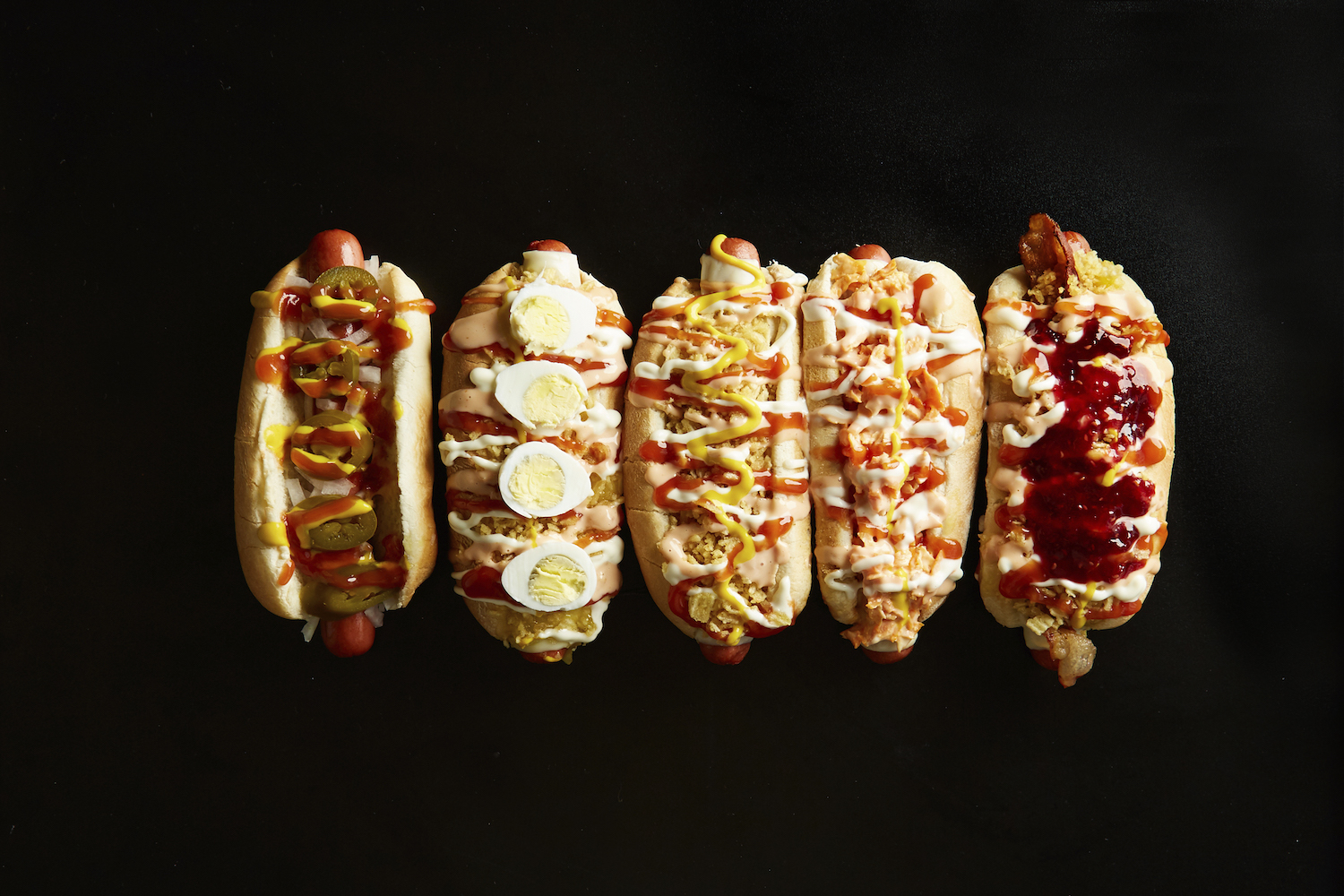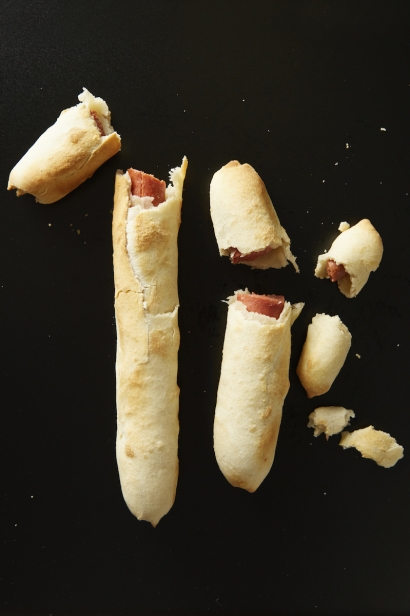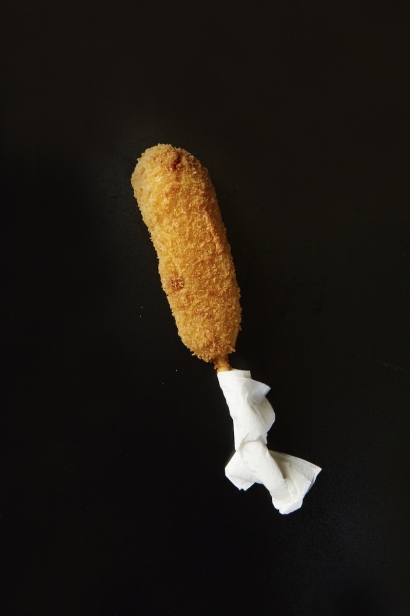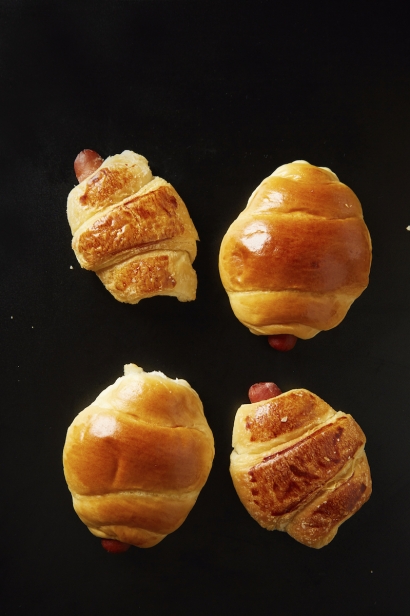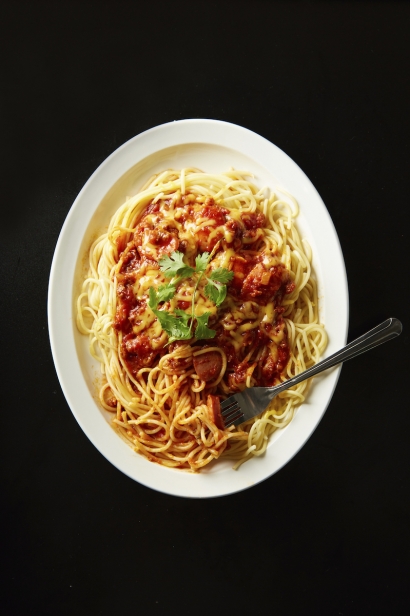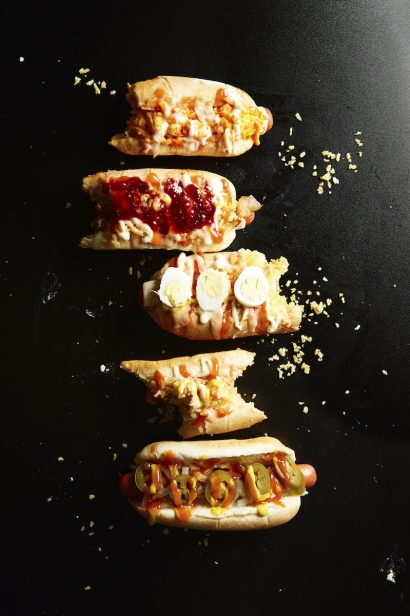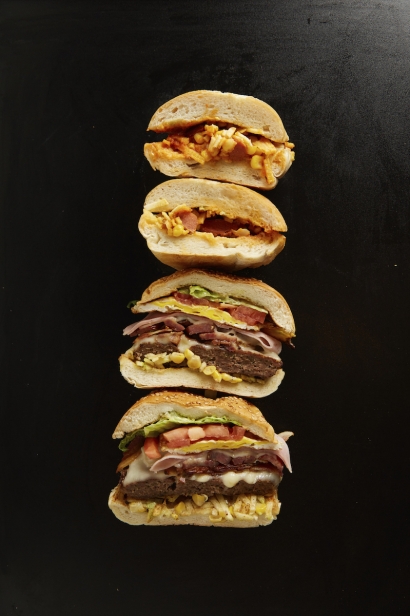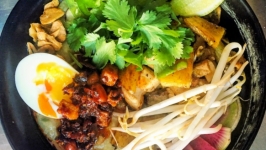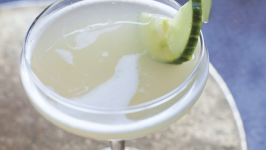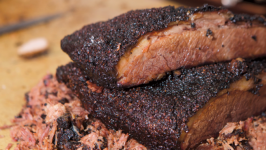Frankly Speaking: Around the World in 10 Hot Dogs
New York City is blessed with an impressive roster of iconic foodstuffs, including pizza, bagels and cheesecake. Yet perhaps none is as wholly representative of the culinary fabric of the Big Apple—past, present and future—as the hot dog.
Famously popularized on the Coney Island seashore almost a century ago—although whether they were actually introduced by the recently returned Feltman’s, or are properly assigned to their longtime rival, Nathan’s, remains very much in dispute—frankfurters essentially paved the way for the city’s street cart tradition. We’re sure both Feltman’s and Nathan’s would be happy to relinquish credit for launching the dirty water dog.
Yet while the roots of those pioneering sausages were German, they’ve certainly progressed beyond mustard and sauerkraut. It’s only fitting that, in the many years since Charlie Feltman (or Nathan Handwerker) first peddled their affordable, transportable wares on Brooklyn’s beaches, ensuing waves of immigrants have imported the hot dog traditions of their home countries as well.
Queens is especially representative of that evolution. So here’s how to cross the world without leaving the borough, via an international hot dog crawl with stops in China, Colombia, Korea and more.
El Perro
As popular on the streets of Cartagena as they are in New York City, perro caliente (a boiled frank almost always adorned with pineapple and crushed potato chips, but with chopped lettuce added for freshness in the hot, coastal regions), is the perfect antidote for tipsy, late-night revelers in Colombia. And while there are numerous Queens establishments that similarly pay homage to the over-the-top hot dogs (such as the oft-cited Le Perrada De Chalo), the fittingly named El Perro makes no bones about its focus. “The Regular” serves as a baseline of sorts, featuring sausages layered with cheese and crushed potato chips, along with a panoply of sauces—ketchup, mayonnaise, mustard and “pink.” But you can keep raising the stakes via the “Criollo” (an add-on of carrot salad), the “Especial” (also loaded with bacon, pineapple and raspberry), the “Mexicano” (fueling the fire with jalapeño and salsa) and the “Perro Con Huevos De Codorniz Hot Dog,” which throws bite-sized quail eggs into the mix.
Taipan Bakery
Chinatown’s old tea houses were displaced by waves of Taiwanese bakeries in the 1980s, selling grab-and-go takes on Chinese pastries. Specially designed to appeal to Chinese American crowds, they featured flavors that had begun to creep into their modern households, which is how ham and cheese sandwiches and hot dogs found their way amongst the sesame balls and red bean buns. Basically outsized Asian pigs in a blanket, Taipan Bakery’s take on franks boasts crescents of puffy, just barely sugared dough folded around lengths of skinless pork sausages. And while it can seem off-putting to purchase a meat product that’s been sitting in a pastry case, it’s worth noting that the bustling Taipan chain bakes their items fresh throughout the day. And clocking in at just $1, these dogs will run you a lot less than what you’ll find at your average dirty water cart.
La Roja de Todos
According to local folklore, a savvy expat named Eduardo Bahamondes Muñoz is credited with importing the idea of hot dogs from 1920s New York City to his native Chile. Enterprisingly opening his own small shop, he sold his sausages topped with popular condiments in the region, including avocado, tomato, potato, eggs and sauerkraut (a nod to the area’s sizable German presence). And as Queens-based Chilean restaurants like La Roja De Todas can vouch for, the copious “completo” eventually made its way back to the States. In fact, the family-run eatery takes its hot dogs supremely seriously, baking the buns in house for their “Completo Sandwich”—a frank topped with chucrut (sauerkraut), tomatoes, smashed avocado and lashings of mayonnaise. Alternatively, you can order yours Italiano-style—so called, because it mimics the colors of the Italian flag—which involves removing the pickled kraut.
New York Hot Dog House
Considering its globe-trotting menu, this Astoria hot dog hut is consummately New York—paying homage to the intrinsic culinary influence immigrants have had on the city via the “Far East Dog” (anointed with chili paste, pickled daikon, scallions and roasted peanuts), as well as the rest of the Americas, represented by the “Tex-Mex Dog” (bacon, baked beans, sour cream), the “California Dog” (radishes and smashed avocado) and the grilled rib eye and sautéed mushroom-onion-and pepper-laden “Philly Cheez.” New York Hot Dog House closed post publication.
Pão de Queijo
Palm-sized cheese puffs aren’t the only Brazilian specialty of note at this all-day café in Astoria. In addition to on-trend acai bowls, empanadas and picanha (steak) with rice and beans, you’ll find “Cachorro-Quente Brasileiro” amongst the extensive selection of sandwiches. Having gained popularity in Rio de Janeiro in 1926, when entrepreneur Francisco Serrador began selling them in movie theaters, hot dogs really infiltrated Brazilian food culture after World War II, owing to increased American influence. And while traditional topping choices can be almost endless—order yours completo, for an all-in assemblage of everything from ground beef and peas to mashed potatoes and catupiry cheese—Pao De Queijo keeps their hot dogs comparatively spartan, by simmering them in homemade tomato sauce, and finishing them off with corn, crunchy potato sticks, lettuce, cheese, tomato and special “green mayo,” folded with fresh herbs.
Knish Nosh
Considering a couple of Jews are credited with popularizing the hot dog in New York City (no matter whether you believe Nathan Handwerker’s origin story, or Charles Feltman’s), it’s unsurprising that franks have remained a staple at Jewish/Eastern European delis and appetizing shops. And that includes Rego Park stalwart Knish Nosh. But why bother with buns when there’s already plenty of paper-thin pastry on hand for wrapping around pillowy potato-, kasha-, broccoli- and pastrami-padded knishes, weighing in at a whopping pound? At this 1950s-era peddler of Jewish (i.e., classically New York City) soul food, foot-long, fully kosher, all-beef Hebrew National hot dogs get the same star treatment, by being swaddled, mummy-style in dough. Note: As with the knishes, a squirt of mustard is the only acceptable accompaniment.
H&Y Marketplace
Hot dogs are largely believed to have found their way to Korea by way of American GIs bringing them over during the Korean War. Since meat was expensive and scarce around wartime, processed meat proved an accessible alternative, and never quite disappeared. Again asserting itself as the perfect universal street food, the hot dog became a popular offering, fried in flour batter and propped on sticks. Which certainly explains the presence of frankfurters at the bustling Flushing market, H&Y. So much more than a grocery store, this Korean behemoth boasts a number of food vendors peddling ready-to-eat snacks. And their playful take on corn dogs—wieners that have been skewered on sticks, panko-crusted and flash-fried—are ideal for holding in one hand and nibbling at will, as you troll the aisles for packages of chewy rice cakes, blocks of thinly sliced rib eye and multi-colored jars of jewel-like kimchi.
Mama's Empanadas
Sure, Mama’s stuffs the expected chicken, vegetables and beef into their empanadas. But you’ll also find bits of perro caliente poked into the pastry pockets, courtesy of the jalapeño and carne molida-festooned “Chilly Dog,” or the straightforward “Hot Dog & Cheese.” The frankfurter love doesn’t stop there. You’ll also spot salchipapa on the Latin American menu, which was originally invented—as is the case with many beloved street foods—to address scarcity issues in Lima. Basically, they’re loaded fries, Peruvian-style, strewn with bias-sliced sausages.
Traditional Xinjiang Barbecue Cart
As far as mobile vendors go, you might not think to turn to this Chinese mini-fleet in pursuit of hot dogs. Still, if you’re able to see your way past the enticing, char-grilled skewers of lamb, beef, chicken, quail and squid (supplemented by an array of smoky innards, such as tendon, gizzard, kidney and heart), you’ll regularly spy hot dogs, which the cooks attempt to gussy up by cutely carving like mangoes.
Renee's Kitchenette and Grill
A mainstay at children’s birthday parties, it’s no wonder that Filipino spaghetti—slicked with tomato sauce seasoned with sugar and banana ketchup—is generally sweeter than cake. Its omnipresence at any special, well-attended event, really, also accounts for the panoply of ingredients thrown in, to inexpensively bulk up a batch of noodles. Want to give the nostalgic invention a try? Offered at the local branch of the Filipino fast food chain Jollibee as well as Renee’s home-style bi-level café in Woodside, this not-just-for-kiddies dish features noodles tossed with soft wedges of pork hot dog, slicked in a meaty tomato sauce that’s been inundated with banana ketchup and finished with a topcoat of melted, processed yellow cheese.
Feltman’s | @feltmansconeyisland
Nathan’s | @originalnathans
El Perro
Taipan Bakery | @taipanbakeryny
La Roja De Todas
Pao De Queijo
Knish Nosh
H&Y Marketplace
Mama's Empanadas | @mamasempanadas4
Traditional Xinjiang Barbecue Cart
Renee's Kitchenette and Grill


